beat the dealer
description: a book on card counting in blackjack by Edward O. Thorp
38 results
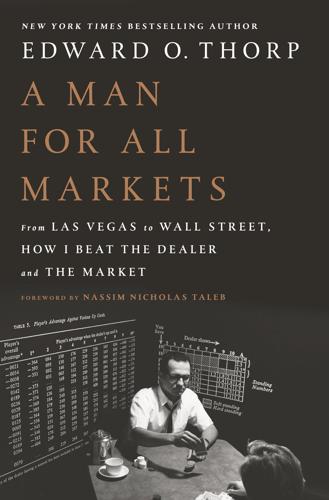
A Man for All Markets
by
Edward O. Thorp
Published 15 Nov 2016
building the first one The MIT Media Lab timeline erroneously gives the year 1966 for our computer, probably because I first revealed its existence in the 1966 revised edition of Beat the Dealer. However, the correct year is 1961, when we completed and successfully tested it in Las Vegas, as explained in numerous subsequent publications, and verified in correspondence dated August 1961, between Shannon and me, now in the archives of the MIT Museum. The device itself also remains at the museum. few early players Among them were Emmanuel Kimmel (Mr. X of Beat the Dealer), Jesse Marcum (the “little dark haired guy from Southern California” in Beat the Dealer), Russell Gutting (“Junior”), Benjamin F. (“System Smitty”) Smith, and Mr.
…
He lost his scalp and most of his blood. Fortunately a state trooper found the scalp and it was reattached. It took a long time for his body to heal. While spending much of his senior year in the hospital, he read Beat the Dealer. That summer, between graduation and an upcoming three-year enlistment in the navy, he ignored his mother’s advice to the contrary and went to Las Vegas as one of the early card counters. Using Beat the Dealer as a guide, he brought a bankroll of $200 and ran it up to $10,000. It took four months. The grueling days at the green felt tables often lasted sixteen hours. It was a hard way to earn money but the real value, as with so many before and after him, was in what the young man learned.
…
bits of publicity E.g., Time, “Games: ‘Beating the Dealer,’ ” January 25, 1963, p. 70. “It's Bye! Bye! Blackjack” appeared Scherman, 1964. a nine-page story O’Neil, Paul. “The Professor Who Breaks the Bank,” Life, March 27, 1964, pp. 80–91. a heart attack In April of 1966. thwart these card counters Vic Vickery, “Counting on Blackjack,” Las Vegas Style magazine, May 1993, pp. 61, 67. Players Too Smart Carson City (UPI): New York Journal-American, April 3, 1964. CHAPTER 8 High–Low System I called this the Complete Point Count in Beat the Dealer. pooling their bankrolls For the optimal trade-off between risk and return, the bet size in a given situation is proportional to bankroll.
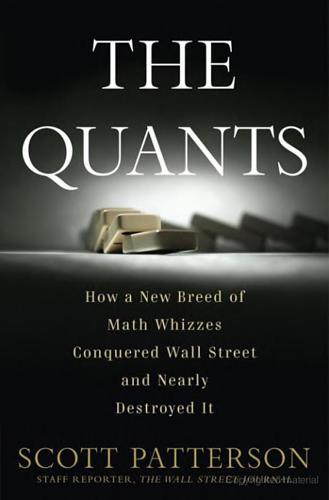
The Quants
by
Scott Patterson
Published 2 Feb 2010
Thorp was eager to test his theory, but he didn’t think he needed that much cash. He decided to accept $10,000 and promptly headed for Reno. The same day Thorp beat the dealer in that ratty Reno casino at five in the morning, he awoke in the afternoon eager to continue his experiment. After a hearty meal, he met with one of his financial backers, known as the mysterious “Mr. X” in the book he would later write detailing his system, Beat the Dealer. Later that day, a “Mr. Y” arrived. Mr. X was, in fact, a New York businessman with connections to organized crime. His name was Emmanuel “Manny” Kimmel, a short, white-haired racketeer with his fingers in everything from numbers games in Newark, New Jersey, to East Coast horse tracks.
…
Thorp had calculated that when the ratio of tens left in the deck relative to other cards increased, the odds turned in his favor. For one thing, it increased the odds that the dealer would bust, since dealers always had to “hit,” or take another card, when their hand totaled sixteen or less. In other words, the more heavily a deck was stacked with ten cards, the better Thorp’s chances of beating the dealer’s hand and winning his bet. Thorp’s tens strategy, otherwise known as the hi-lo strategy, was a revolutionary breakthrough in card counting. While he could never be certain about which card would come next, he did know that statistically he had an edge according to one of the most fundamental rules in probability theory: the law of large numbers.
…
That first summer in Cambridge, Thorp crunched the numbers on blackjack, slowly evolving what would become a historic breakthrough in the game. He fed reams of unwieldy data into a computer, seeking hidden patterns that he could exploit for a profit. By the fall, he’d discovered the rudimentary elements of a blackjack system that could beat the dealer. Eager to publish his results, he decided on a prestigious industry journal, The Proceedings of the National Academy of Sciences. The trouble: the journal accepted papers only from members of the academy. So he sought out the only mathematics member of the academy at MIT, Dr. Claude Elwood Shannon, one of the most brilliant, and eccentric, minds on the planet.
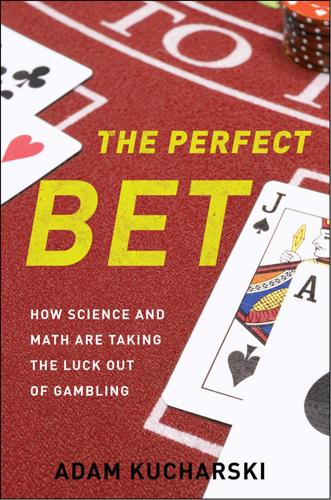
The Perfect Bet: How Science and Math Are Taking the Luck Out of Gambling
by
Adam Kucharski
Published 23 Feb 2016
After reading the sign, only one thought came to mind: card counting works. It was the late 1970s, and casinos had spent the previous decade or so clamping down on a tactic they saw as cheating. Much of the blame—or perhaps credit—for the casinos’ losses goes to Edward Thorp. In 1962, Thorp published Beat the Dealer, which described a winning strategy for blackjack. Although Thorp has been called the father of card counting, the idea for a perfect blackjack strategy was actually born in a military barracks. Ten years before Thorp released his book, Private Roger Baldwin had been playing cards with fellow soldiers at the Aberdeen Proving Ground in Maryland.
…
Baldwin wouldn’t be able to do all the work by hand, so he asked Wilbert Cantey, a sergeant and fellow math graduate, if he could use the base’s calculator. Intrigued by Baldwin’s idea, Cantey agreed to help, as did James McDermott and Herbert Maisel, two other soldiers who worked in the analytics division. While Thorp was working on his roulette predictions in Los Angeles, the four men spent their evenings working out the best way to beat the dealer. After several months of calculations, they arrived at what they thought was the optimal strategy. But their perfect system didn’t turn out to be, well, perfect. “In statistical terms, we still had a negative expectation,” Maisel later said. “Unless you got lucky, you’d still lose in the long run.”
…
He saw it more as an academic obligation. When he’d first mentioned the existence of a winning strategy, the response wasn’t exactly positive. People ridiculed the idea, just as gamblers had done during his first attempt. After all, Thorp’s research challenged the widely held assumption that blackjack couldn’t be defeated. Beat the Dealer was Thorp’s way of proving that his theory was right. THAT SIGN IN ATLANTIC CITY always stuck with Bill Benter, so when he heard about Thorp’s book during a year studying abroad at Bristol University, he headed to the local library to get a copy. He had never seen anything so remarkable. “It showed that nothing was invulnerable,” he said.
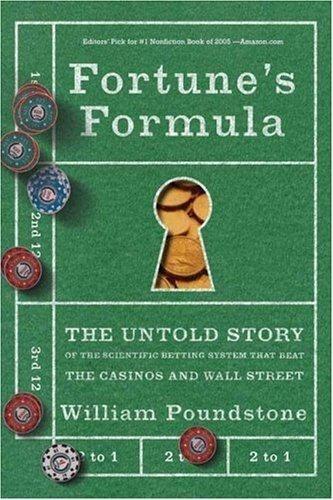
Fortune's Formula: The Untold Story of the Scientific Betting System That Beat the Casinos and Wall Street
by
William Poundstone
Published 18 Sep 2006
The publication for which he is best known came about by accident, though. In spring 1961, a book salesman visited MIT. Thorp found himself describing his blackjack system as a possible book. The salesman urged Thorp to submit an outline. He did. A small New York publisher called Blaisdell took the book. Released as Beat the Dealer in fall 1962, it became an instant classic of gambling literature. Blaisdell was gobbled up by Random House. Despite that apt name, the new corporate owner was reluctant to promote the book, judging it too mathematical. Even without much backing, the book made the best-seller lists. Thorp became a minor celebrity promoting the book.
…
Thorp learned far more about cheating from MacDougall than he had from Kimmel. The two men spent six days in Las Vegas and two in Reno. MacDougall concluded that Thorp was not paranoid—everyone really was out to get him. Many of the dealers were second-dealing, the trick Kimmel had spotted in Reno. In the 1966 revision of Beat the Dealer, Thorp described a superior “point count” strategy. (Still popular today, this system is also known as “high-low.”) You count +1 for every low card you see played (2, 3, 4, 5, or 6) and -1 for every high card (10 or ace). This is easier than it sounds. High and low cards can be mentally paired off (and cancel out).
…
Instead of the claimed 0.62 percent in favor of the house, it was about 0.10 percent in favor of the player. This is without counting cards. The Baldwin group’s basic strategy was not quite right, either. Thorp’s slightly improved strategy bumped up the advantage of the noncounting player to 0.13 percent. For years casinos had unknowingly offered a game that was favorable to the player. In Beat the Dealer, Thorp mentions his two financial backers only as “Mr. X” and “Mr. Y.” (Shannon makes a brief appearance as an unnamed “famous scientist.”) After the book’s success, Kimmel presented himself to friends as the true mastermind behind the book’s card-counting system. When fellow gambler Jack Newton called Kimmel’s bluff and asked why he had let Thorp write about his system, Kimmel replied, “Jack, I didn’t think it would be worth two cents.
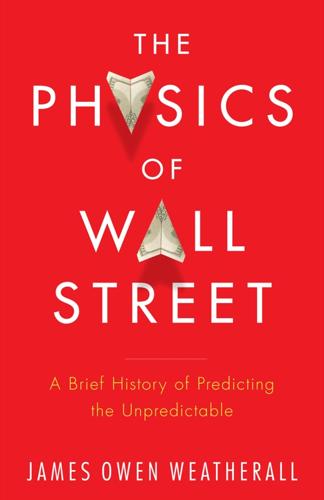
The Physics of Wall Street: A Brief History of Predicting the Unpredictable
by
James Owen Weatherall
Published 2 Jan 2013
Includes bibliographical references. 1. Mathematical physics. 2. Finance. 3. Economics. 530.1 www.scribepublications.com.au To Cailin Contents Introduction: Of Quants and Other Demons 1 Primordial Seeds 2 Swimming Upstream 3 From Coastlines to Cotton Prices 4 Beating the Dealer 5 Physics Hits the Street 6 The Prediction Company 7 Tyranny of the Dragon King 8 A New Manhattan Project Epilogue: Send Physics, Math, and Money! Acknowledgments Notes References Introduction: Of Quants and Other Demons WARREN BUFFETT ISN’T the best money manager in the world.
…
It was at this point that the recognition of fat-tailed distributions reached the financial mainstream. But I am getting ahead of the story. It would take a blackjack sharp and a dilettantish ex-physicist to move finance to a place where it could take advantage of the insights of Bachelier, Osborne, and, ultimately, Mandelbrot. 4 Beating the Dealer THE YEAR IS 1961. The place, Las Vegas. It’s a Saturday night in the middle of June. The temperature is hovering around 100 degrees even though the sun has already set. Inside the casinos, no one cares. Vegas is at the height of its postwar golden age. A dozen world-class resorts, the first of their kind, line the nascent Strip, from the Sahara in the north to the Tropicana in the south.
…
Number cards are worth their face value; face cards are worth ten points; and an ace can be worth either one point or eleven points, at the player’s discretion. The goal is to have the highest number of points without going over twenty-one. At a casino, each player is competing individually against the dealer, who represents the house. The goal, then, is to beat the dealer without busting. If you win, the game pays a dollar for every dollar you bet unless your initial two cards add up to twenty-one. In that case, the game pays a $1.50-per-dollar bet. Casinos always employ the same strategy. The dealer has to take a new card as long as his total number of points is less than seventeen.

Concentrated Investing
by
Allen C. Benello
Published 7 Dec 2016
,” Worth, September 1999. 2. Edward O. Thorp, “The Legacy of Beat the Dealer,” Wilmott.com, September 24, 2002. 3. Ibid. 4. Ibid. 5. Howard Gardner, The Mind’s New Science: A History of the Cognitive Revolution (New York: Basic Books, 1987. 6. William Poundstone, Fortune’s Formula: The Untold Story of the Scientific Betting System That Beat the Casinos and Wall Street (New York: Hill and Wang, 2006). 88 Concentrated Investing 7. 8. 9. 10. http://home.williampoundstone.net/Kelly.htm. Ibid. Ibid. Edward O. Thorp, “The Legacy of Beat the Dealer,” Wilmott.com, September 24, 2002. Elwyn Berlkamp, “Bettor Math,” The American Scientist, November‐December, 2005.
…
Selfridge persuaded the skeptics that he knew Thorp from the University of California, Los Angeles, where he had studied for his PhD in mathematics. He told them Thorp was no crank.4 The committee relented, and Thorp delivered his talk to the American Mathematical Society in January 1961. That talk formed the basis for Beat the Dealer, a book that inspired scores of other books and hundreds of technical articles, and is today considered a classic in gambling literature. In his wonderful book Fortune’s Formula, William Poundstone recounts that Thorp’s key insight was that blackjack was played in casinos using Kelly, Shannon, and Thorp: Mathematical Investors 73 only one deck, which was not shuffled between hands.
…
He died of a stroke on the sidewalk in 1965 at the age of 41. Legend has it that he never used his own criterion to make a bet. He must have known, however, that it was being used to make bets, not on baseball or horse racing, but on blackjack. In 1960, Thorp figured out how to combine his card‐ counting system and Kelly’s Criterion to beat the dealer—not just one, but many of them. He and Shannon would visit casinos, sometimes in costume—a fake beard or sunglasses—to avoid detection, and play hand after hand of blackjack. Poundstone says that Thorp was so successful in Las Vegas that the casinos started taking “counter‐measures” against him, which meant adding more decks, shuffling the cards more frequently, using dealers who cheated by manipulating the deck, threatening Thorp with injury, and then simply banning him from the casinos.
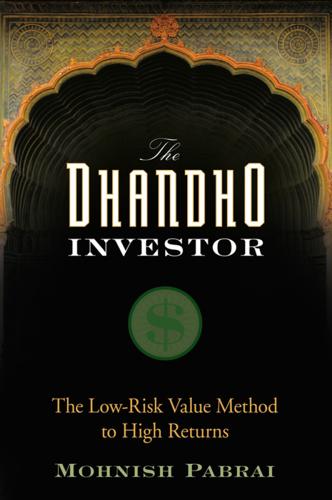
The Dhandho Investor: The Low-Risk Value Method to High Returns
by
Mohnish Pabrai
Published 17 May 2009
(I have to admit that this hasn’t stopped me yet.) But it wasn’t always a losing proposition. In the 1960s, an MIT math professor, Ed Thorp, used MIT’s computers to run a variety of calculations and came up with optimized blackjack play. Thorp named the optimal play of cards Basic Strategy. He wrote the best-selling book, Beat the Dealer.4 It is, even today, regarded as a classic work, and blackjack players the world over rely on Basic Strategy to optimize their card play. In the 1960s, casinos offered single-deck blackjack and dealt the entire deck. Thorp calculated that players who counted cards and scaled their bets based on the residual cards left in the deck had an edge over the casinos.
…
He started frequenting the Nevada casinos and cleaned up. The casinos didn’t understand why he was consistently winning, but, with the mob running the casinos, they didn’t wait to understand. They simply showed him the door and made it very clear that if he ever returned, the reception wouldn’t be so civil. When Thorp published Beat the Dealer,5 players the world over started cleaning up. Casino owners also read Thorp’s book and began to make changes to the game. Over the past four decades, the game has gone through numerous changes. Each time the casinos made a change, some smart gambler would figure out a way to beat the system. Then the casinos would figure it out and make another change.
…
Chapter 10 1 William Poundstone, Fortune’s Formula: The Untold Story of the Unscientific Betting System (New York: Hill and Wang, 2005). 2 Michael Mauboussin, “Mauboussin on Strategy: Size Matters,” Legg Mason Capital Management, February 1, 2006, www.leggmason.com/funds/knowledge/mauboussin/Mauboussin_on_Strategy_020106.pdf. 3 Peter D. Kaufman, ed., Poor Charlie’s Almanack (Virginia Beach, VA: Donning Company Publishers, 2005), p. 184. 4 Edward O. Thorp, Beat the Dealer: A Winning Strategy for the Game of Twenty-One (New York: Vintage, 1966). 5 See note 4. 6 See note 1. 7 Chris Leither, Ludvig von Mises, Meet Benjamin Graham: Value Investing from an Austrian Point of View, Austrian Economics and Financial Markets Conference, Venetian Hotel Resort Casino, Las Vegas, NV, February 18-19, 2005; posted on the web at http://mises.org/journals/scholar/Leithner.pdf (accessed November 18, 2006). 8 Warren Buffett, Letters to Partners of the Buffett Partnerships, 1956-1970, 1963, 1964 letters. 9 Roger E.
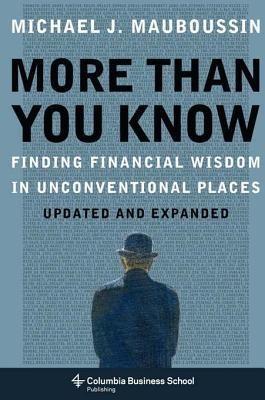
More Than You Know: Finding Financial Wisdom in Unconventional Places (Updated and Expanded)
by
Michael J. Mauboussin
Published 1 Jan 2006
Most honest players admit they follow the latter path.” Replace the word “handicapping” with “investing” and “horses” with “stocks,” and Crist could be talking about the stock market. Yet another domain where expected-value thinking is pertinent is blackjack, as Ed Thorp’s best-selling book, Beat the Dealer, shows. In blackjack, the payoffs are set, and the player’s principal task is to assess the probability of drawing a favorable hand. Thorp showed how to count cards in order to identify when the probabilities of a winning hand tilt in a player’s favor. When the odds favor the player, the ideal strategy is to increase the bet (effectively increasing the payout).
…
Players of probabilistic games must examine lots of situations because the market price is usually pretty accurate. Investors, too, must evaluate lots of situations and gather lots of information. For example, the very successful president and CEO of Geico’s capital operations, Lou Simpson, tries to read five to eight hours a day and trades very infrequently. • Limited opportunities. As Thorp notes in Beat the Dealer, even when you know what you’re doing and play under ideal circumstances, the odds still favor you less than 10 percent of the time. And rarely does anyone play under ideal circumstances. The message for investors is that even when you are competent, favorable situations—where you have a clear-cut variant perception vis-à-vis the market—don’t appear very often
…
Mauboussin, Expectations Investing (Boston, Mass.: Harvard Business School Press, 2001), 105-8. 9 Steven Crist, “Crist on Value,” in Andrew Beyer et al., Bet with the Best: All New Strategies From America’s Leading Handicappers (New York: Daily Racing Form Press, 2001), 63-64. 10 Edward O. Thorp, Beat the Dealer (New York: Vintage Books, 1966), 56-57. 4. Sound Theory for the Attribute Weary 1 See Mitchel Resnick, Turtles, Termites, and Traffic Jams (Cambridge, Mass.: MIT Press, 1994), 50-52. Also see, Steven Johnson, Emergence: The Connected Lives of Ants, Brains, Cities, and Software (New York: Scribner, 2001), 12-13. 2 Professor Burton Malkiel: “It’s like giving up a belief in Santa Claus.
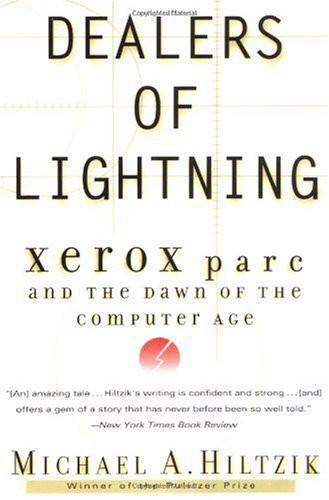
Dealers of Lightning
by
Michael A. Hiltzik
Published 27 Apr 2000
The uncompromising give-and-take of Taylor’s ARPA contractor meetings lent itself to reproduction at PARC in the form of “Dealer.” The name derived from the book Beat the Dealer, by Edward O. Thorp, an MIT math professor who had developed a surefire system for winning at blackjack—“beating the dealer”—by counting the high-and low-value cards dealt out in hands. (This truly effective system would make the unassuming Ed Thorp the godfather of professional blackjack card-counting.) Taylor was not much of a blackjack buff. What interested him about Beat the Dealer was its compelling metaphor of a doughty individual fielding the challenge of a group of trained and determined adversaries.
…
DEALERS OF LIGHTNING Xerox PARC and the Dawn of the Computer Age Michael Hiltzik To Deborah, Andrew, and David Contents Cast of Characters v Timeline ix Introduction The Time Machine xv Part I: Prodigies 1 Chapter 1 The Impresario 3 Chapter 2 McColough’s Folly 21 Chapter 3 The House on Porter Drive 33 Chapter 4 Utopia 52 Chapter 5 Berkeley’s Second System 68 Chapter 6 “Not Your Normal Person” 80 Chapter 7 The Clone 97 Chapter 8 The Future Invented 117 Part II: Inventors 125 Chapter 9 The Refugee 127 Chapter 10 Beating the Dealer 145 Chapter 11 Spacewar 155 Chapter 12 Thacker’s Bet 163 Chapter 13 The Bobbsey Twins Build a Network 178 Chapter 14 What You See Is What You Get 194 Chapter 15 On the Lunatic Fringe 211 Chapter 16 The Pariahs 229 Chapter 17 The Big Machine 242 Part III: Messengers 257 Chapter 18 Futures Day 259 Chapter 19 Future Plus One 274 Chapter 20 The Worm That Ate the Ethernet 289 Chapter 21 The Silicon Revolution 300 Chapter 22 The Crisis of Biggerism 314 Chapter 23 Steve Jobs Gets His Show and Tell 329 Chapter 24 Supernova 346 Chapter 25 Blindsided 361 Chapter 26 Exit the Impresario 371 Epilogue Did Xerox Blow It?
…
Even so, for the white-light copier engineers of Webster the laser printer never shed the frightening aspect of an alien technology. “Years afterwards I went back there,” Starkweather said. “I ran into my old boss, the one who had tried to keep me from leaving. His last words to me were, ‘Are you still playing around with that laser stuff?’ “By then the laser printer was a $2 billion-a-year business.” CHAPTER 10 Beating the Dealer Chris Jeffers took a deep breath before walking into the big corner conference room on Porter Drive. Alan Kay, who had recruited his childhood friend to join PARC as a sort of amanuensis and chief of staff, had guided him through the rigorous interview process and as far as this last hurdle, the delivering of a technical presentation to his future colleagues sitting in a sort of plenary session.
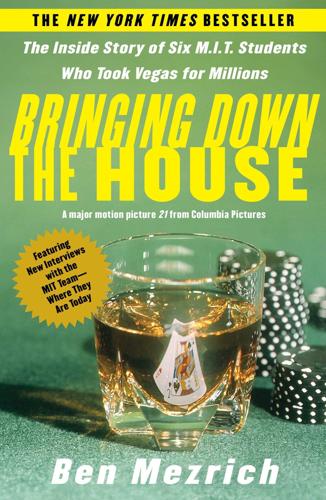
Bringing Down the House: The Inside Story of Six M.I.T. Students Who Took Vegas for Millions
by
Ben Mezrich
Published 2 Dec 2002
The dealer’s play depended on the casino, but usually he would hit until his cards added up to seventeen—or until he busted. When you got pairs of the same card, you could split them and have two bets going on separate hands. Again depending on the casino, you could double your bet—double down—on your first two cards, taking a single card in the hopes of beating the dealer for more money. The rules were fairly simple, as card games went. But the strategy seemed tricky, and Kevin was by no means an expert. “I know the books say you’re supposed to keep on hitting until you get seventeen, if the dealer’s showing a high card. When the dealer shows a weak card—maybe a five or a six—you usually stick with your first two cards.
…
He’d seen enough of Fisher’s play to know that he wasn’t a threat.Another rich kid doing something stupid. The dealer dealt the first card to Fisher—and there it was, an ace of spades. The two women crowed, jabbering about the crazy fool’s luck. The rest of the cards came out: Fisher’s second card was a nine, for a soft twenty, beating the dealer’s seventeen. Fisher swept up his winnings and stood, smiling at the two women. “Thank you for your help. I think I’m finally starting to get the hang of it.” Then he walked right past Kevin and Martinez and headed for the pool. They found him stretched out on a lounge chair, hands behind his head.
…
So you must have heard of the hi-lo method of counting, right?” Kevin nodded again. His memory wasn’t photographic like some other MIT kids he knew, but he retained things fairly well. He knew that the hi-lo method dated back to 1962 and the publication of Edward Thorp’s groundbreaking best-seller Beat the Dealer. In the book, Thorp outlined a simple counting method that allowed players to keep rough track of the number of high cards left in an unplayed shoe. Instead of counting individual cards, players simply kept track of a single number, the running count. This number was added to every time a low card came out of the deck, and subtracted from every time a high card hit the table.
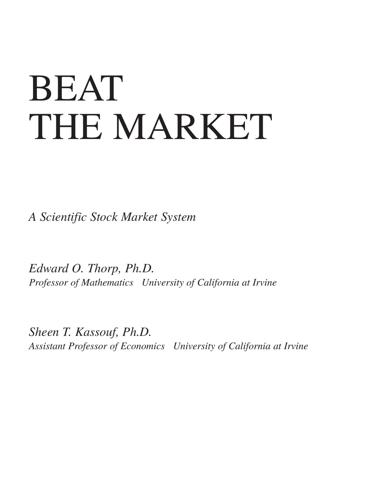
Beat the Market
by
Edward Thorp
Published 15 Oct 1967
Other books by EDWARD O. THORP Elementary Probability Beat the Dealer Other books by SHEEN T. KASSOUF Evaluation of Convertible Securities A Theory and an Econometric Model for Common Stock Purchase Warrants BEAT THE MARKET A scientific Stock Market System Random House New York BEAT THE MARKET A Scientific Stock Market System Edward O. Thorp, Ph.D. Professor of Mathematics University of California at Irvine Sheen T. Kassouf, Ph.D. Assistant Professor of Economics University of California at Irvine 987 © Copyright, 1967, by E. O. Thorp and S. T. Kassouf All rights reserved under International and Pan-American Copyright Conventions.
…
Harper and Row, New York, 1963. A standard text on the mechanics of investing. [18] Skelly, William S., Convertible Bonds: A Study of Their Suitability for Commerical Bank Bond Portfolios. Salomon Bros. and Hutzler, New York, 1959. The role convertible bonds can play in a bank’s portfolio. [19] Thorp, Edward O., Beat the Dealer. Revised. Random House, New York, 1966. The best seller which presents a winning strategy for the casino game of blackjack, or twenty-one. Includes anecdotes and experiences of the author and an account of unsuccessful attempts by casinos to change their rules. [20] Von Neumann, John and Morgenstern, Oskar, Theory of Games and Economic Behavior.
…
, 161 White Oil Company, 99 Writer, option, 164 definition, 162 Yield, current, 144 to maturity, 144 Xerox 4s of ‘84, 156-158 Zero-profit line, 80 explained, 47 how to draw, 48, 81 with reverse hedge, 124 Yearly range, 119 ABOUT THE AUTHORS EDWARD O. THORP is the author of the best-seller Beat the Dealer: A Winning Strategy for the Game of TwentyOne, published by Random House in 1962 and in revised form in 1966. It presented the first scientific winning system ever devised for a major casino gambling game. He has also written Elementary Probability (1966) and numerous mathematical papers on probability, game theory, and functional analysis.

Alex's Adventures in Numberland
by
Alex Bellos
Published 3 Apr 2011
Kelly’s strategy would later help Thorp make more than $80 billion dollars on the financial markets. Ed Thorp announced his card-counting system in his 1962 book Beat the Dealer. He refined the method for a second edition in 1966 that also counted the cards worth ten (the jack, queen, king and ten). Even though the ten cards shift the odds less than the five do, there are more of them, so it’s easier to identify advantages. Beat the Dealer sold more than a million copies, inspiring – and continuing to inspire – legions of gamblers. In order to eliminate the threat of card-counting, casinos have tried various tactics.
…
And casinos have been forced to make it an offence to use a computer to predict at roulette. Thorp last played blackjack in 1974. ‘The family went on a trip to the World’s Fair in Spokane and on the way back we stopped at Harrah’s [casino] and I told my kids to give me a couple of hours because I wanted to pay for the trip – which I did.’ Beat the Dealer is not just a gambling classic. It also reverberated through the worlds of economics and finance. A generation of mathematicians inspired by Thorp’s book began to create models of the financial markets and apply betting strategies to them. Two of them, Fischer Black and Myron Scholes, created the Black-Scholes formula indicating how to price financial derivatives – Wall Street’s most famous (and infamous) equation.
…
Two of them, Fischer Black and Myron Scholes, created the Black-Scholes formula indicating how to price financial derivatives – Wall Street’s most famous (and infamous) equation. Thorp ushered in an era when the quantitative analyst, the ‘quant’ – the name given to the mathematicians relied on by banks to find clever ways of investing – was king. ‘Beat the Dealer was kind of the first quant book out there and it led fairly directly to quite a revolution,’ said Thorp, who can claim – with some justification – to being the first-ever quant. His follow-up book, Beat the Market, helped transform securities markets. In the early 1970s he, together with a business partner, started the first ‘market neutral’ derivatives hedge fund, meaning that it avoided any market risk.
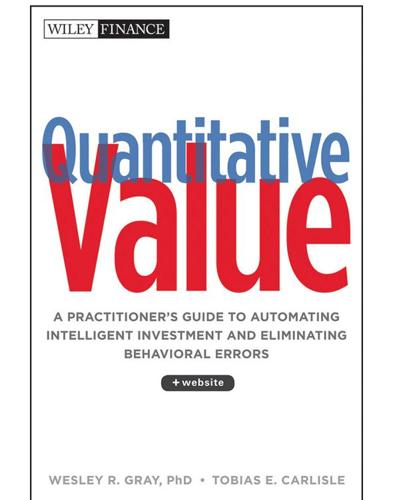
Quantitative Value: A Practitioner's Guide to Automating Intelligent Investment and Eliminating Behavioral Errors
by
Wesley R. Gray
and
Tobias E. Carlisle
Published 29 Nov 2012
Like bridge, you do better in the market if you get more information, sooner, and put it to better use. It's no surprise then that Buffett, arguably the greatest investor in history, is a bridge addict. Thorp was no stranger to the card table either. Before he figured out how to beat the market, Thorp wrote Beat the Dealer, the definitive book on blackjack card counting. William Poundstone recounts the story of Thorp's foray into card counting in his book, Fortune's Formula.6 In 1958, Thorp had read an article by mathematician Roger Baldwin, who had used U.S. Army “computers”—which actually meant “adding machines” or the people who operated them—to calculate the odds of various blackjack strategies in an effort to find an optimal strategy.
…
Thorp realized that by simply keeping track of the five cards, the player could determine the favorability or otherwise of the cards remaining in the deck. Thorp found that his improved strategy gave the player an edge of 0.13 percent. That small edge, Thorp reasoned, given enough hands, could add up to a lot of money. He published his new strategy first in a paper and then subsequently as Beat the Dealer in 1962, which went on to become a classic in gambling literature. The book detailed how Thorp had used his card-counting strategy for a period of several years, making $25,000 in the process. The casinos didn't like players counting cards to gain an edge. They immediately started taking “counter-measures,” including adding more decks, randomly shuffling the cards, using “mechanics” (dealers who cheated by manipulating the cards in the deck), threatening Thorp with physical harm, and then simply barring him from the casinos.
…
Index Accruals detecting earnings manipulation Activism and cloning Adjustment bias Alpha and adjusted performance sustainable Altman, Edward I. Analysis legend Anchoring Anderson, Keith Apple Inc. Availability bias Ayres, Ian Bachelier, Louis Bailey, Morris Bankruptcy prediction history of improving Batchelor, Roy Beat the Dealer (Thorp) Beat the Market: A Scientific Stock Market System (Thorp & Kassouf) Behavioral errors, quantitative investing's protection against cognitive biases experts' errors value investors'errors Behavioral Investing: A Practitioners Guide to Applying Behavioral Finance (Montier) Benchmarking Beneish, Messod Berk, Jonathan Bogue, Marcus Bonaime, Alice Book value-to-market capitalization ratio Brooks, Chris Buffett, Warren See's Candies acquisition Buybacks Campbell, John Cash flow on assets (CFOA) CGM Focus Fund Chava, Sudheer “The Checklist” (Gawande) The Checklist Manifesto: How to Get Things Right (Gawande) Chuvakhin, Nikolai Cloning Cognitive biases adjustment bias anchoring availability bias hindsight bias neglect of the base case overconfidence self-attribution bias Confirmation bias “Contrarian Investment, Extrapolation, and Risk” (Lakonishok, Schleifer, & Vishny) Cowles, Alfred, III “The Cross-Section of Expected Stock Returns” (Fama & French) Data mining “Decoding Inside Information” (Cohen, Malloy, & Pomorski) “Delisting Returns and Their Effect on Accounting-Based Market Anomalies” (Price, Beaver, & McNichols) Dumb money, paradox of behavioral errors, quantitative investing's protection against cognitive biases experts' errors value investors'errors quantitative value investing, power of value strategies Graham's quantitative Earnings manipulators and frauds, eliminating accruals detecting earnings manipulation PROBMs, predicting Enron Earnings yield Efficient market theory Einhorn, David Enron Enterprise yield (EBITDA and EBIT variations) Expert Political Judgment (Tetlock) Fama, Eugene Financial distress, measuring risk of bankruptcy prediction history of improving calculating universe, scrubbing Financial strength case study: Lubrizol Corporation comparing performance of F_SCORE and FS_SCORE financial strength score (FS_SCORE) current profitability formula and interpretation recent operational improvements stability Piotroski Fundamental Score (F_SCORE) analyzing formula and interpretation Fooled by Randomness (Taleb) Forward earnings estimate Franchises finding economic moats and excess returns persistence pricing power and big, stable margins See's Candies, acquisition by Buffett Fraud.
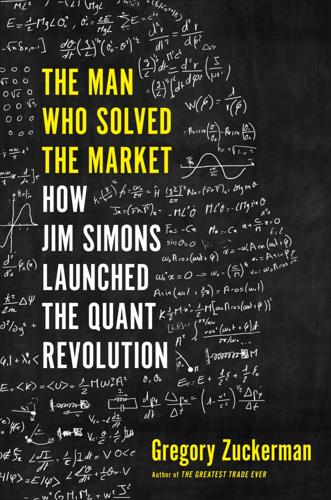
The Man Who Solved the Market: How Jim Simons Launched the Quant Revolution
by
Gregory Zuckerman
Published 5 Nov 2019
Thorp was an academic who had worked with Claude Shannon, the father of information theory, and embraced the proportional betting system of John Kelly, the Texas scientist who had influenced Elwyn Berlekamp. First, Thorp applied his talents to gambling, gaining prominence for his large winnings as well as his bestselling book, Beat the Dealer. The book outlined Thorp’s belief in systematic, rules-based gambling tactics, as well as his insight that players can take advantage of shifting odds within games of chance. In 1964, Thorp turned his attention to Wall Street, the biggest casino of them all. After reading books on technical analysis—as well as Benjamin Graham and David Dodd’s landmark tome, Security Analysis, which laid the foundations for fundamental investing—Thorp was “surprised and encouraged by how little was known by so many,” he writes in his autobiography, A Man for All Markets.7 Thorp zeroed in on stock warrants, which give the holder the ability to purchase shares at a certain price.
…
Douglas Bauer, “Prince of the Pit,” New York Times, April 25, 1976, https://www.nytimes.com/1976/04/25/archives/prince-of-the-pit-richard-dennis-knows-how-to-keep-his-head-at-the.html. 6. Emanuel Derman, My Life as a Quant: Reflections on Physics and Finance (Hoboken, NJ: John Wiley & Sons, 2004). 7. Edward O. Thorp, A Man for All Markets: From Las Vegas to Wall Street, How I Beat the Dealer and the Market (New York: Random House, 2017). 8. Scott Patterson, The Quants: How a New Breed of Math Whizzes Conquered Wall Street and Nearly Destroyed It (New York: Crown Business, 2010). 9. Patterson, The Quants. 10. Michelle Celarier, “How a Misfit Group of Computer Geeks and English Majors Transformed Wall Street,” New York, January 18, 2018, http://nymag.com/intelligencer/2018/01/d-e-shaw-the-first-great-quant-hedge-fund.html. 11.
…
See Statistical arbitrage Archimedes (yacht), 267, 320 Armstrong, Neil, 170 Artin, Emil, 69 Asness, Clifford, 256–57 Association for Computing Machinery (ACM), 37 astrology, 121–22 autism, xviii, 268, 287, 323–24 Automated Proprietary Trading (APT), 131–32, 133 AWK, 233–34 Ax, Frances, 98 Ax, James, xi, 37, 68–69, 324 at Axcom Limited, 78–83 backgammon, 69, 76–77 background of, 68–69 at Berkeley, 68–69 Berlekamp and, 95–102 conspiracy theories of, 77–78, 99 at Cornell, 69, 70–71 death of, 103 focus on mathematics, 69–70 at Monemetrics, 51–52, 72–73 personality of, 68, 70, 71–72, 98–99 Simons and, 34, 68–69, 99–103, 107 at Stony Brook, 34, 71–72 trading models, 73, 74–75, 77–78, 81–86, 95–101, 107 Axcom Limited, 78–83 disbanding of, 118 trading models, 95–101, 107–18 Ax-Kochen theorem, 69, 70, 103 Bachelier, Louis, 128 backgammon, 69, 76–77 backtesting, 3 Bacon, Louis, 140 Baker House, 15–16 Baltimore City Fire and Police Employees’ Retirement System, 299–300 Bamberger, Gerry, 129–30 BankAmerica Corporation, 212 Bannon, Steve, 279, 280, 280n break with Mercers, 304 at Breitbart, 278–79, 299–300, 301–2 midterm elections of 2018, 304 presidential election of 2016, xviii, 281–82, 284–85, 288–90, 293, 294–95 Barclays Bank, 225, 259 bars, 143–44 Barton, Elizabeth, 272 basket options, 225–27 Baum, Julia Lieberman, 46, 48, 50, 62–63, 65 Baum, Leonard “Lenny,” xi, 45–46, 63–66 background of, 46 currency trading, 28–29, 49–53, 54–60, 62–64, 73 death of, 66 at Harvard, 46 at IDA, 25, 28–29, 46–49, 81 at Monemetrics, 45, 49–60, 63–65 move to Bermuda, 64–65 rift with Simons, 63–65 trading debacle of 1984, 65, 66 Baum, Morris, 46 Baum, Stefi, 48, 62, 63 Baum–Welch algorithm, 47–48, 174, 179 Bayes, Thomas, 174 Bayesian probability, 148, 174 Beane, Billy, 308 Beat the Dealer (Thorp), 127, 163 Beautiful Mind, A (Nasar), 90 behavioral economics, 152, 153 Bell Laboratories, 91–92 Belopolsky, Alexander, 233, 238, 241, 242, 252–54 Bent, Bruce, 173 Berkeley Quantitative, 118 Berkshire Hathaway, 265, 309, 333 Berlekamp, Elwyn, xi at Axcom, 94–97, 102–3, 105–18 background of, 87–90 at Bell Labs, 91–92 at Berkeley, 92–93, 95, 115, 118, 272 at Berkeley Quantitative, 118 death of, 118 at IDA, 93–94 Kelly formula and, 91–92, 96, 127 at MIT, 89–91 Simons and, 2–3, 4, 93–95, 109–10, 113–14, 116–18, 124 trading models and strategies, 2–3, 4, 95–98, 106–18, 317 Berlekamp, Jennifer Wilson, 92 Berlekamp, Waldo, 87–88 Berlin Wall, 164 Bermuda, 64–65, 254 Bernard L.
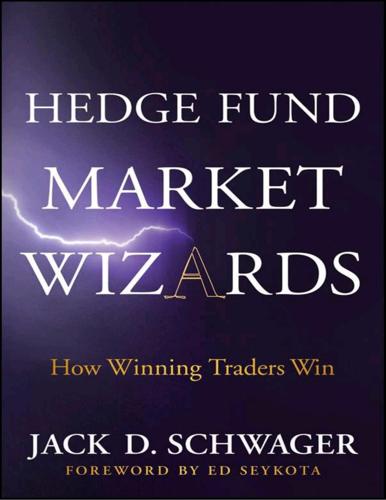
Hedge Fund Market Wizards
by
Jack D. Schwager
Published 24 Apr 2012
Thorp’s career encompasses an extraordinary number of first achievements: He co-developed (along with Claude Shannon) the first wearable computer that could be used to win at roulette. He developed the first blackjack betting strategy that provided a positive edge to the player, which he divulged in his global best seller, Beat the Dealer. The book changed the way casinos operate. Thorp along with Sheen Kassouf developed the first known systematic approach to trading warrants and other convertible securities (e.g., options, convertible bonds, convertible preferred stocks) by hedging them with offsetting stock positions, an approach they detailed in their book, Beat the Market.3 He was the first to formulate an option-pricing model that was equivalent to the Black-Scholes model.
…
Some years ago, I read a book called Eudaemonic Pie about a group of physics students who also developed a shoe computer using Newtonian physics to predict the most likely outcome for roulette spins. Was there any connection between you and them? Here is the connection. In the second edition of Beat the Dealer, I mentioned there was a way to win at roulette. In 1969, I got a call from a mathematician named Ralph Abraham inquiring about a roulette system. At that time, I thought that I would never use it myself again, so I might as well let the information out. Within a few years, some physics graduate students did the same thing.
…
My wife, Vivian, looked at them suspiciously. I guess she wasn’t buying the niece story. Vivian was much more perceptive, but I was willing to accept it at face value. Kimmel asked me a lot of questions about blackjack and then asked me to demonstrate the system. After a couple of hours, he decided to go ahead. After your book Beat the Dealer, which revealed your blackjack system to the public, was published and became a best seller, were the casinos beginning to lose money as a result? What happened was this: There were a number of really good players, maybe a thousand or so, who extracted money from the casinos. Then there was a much larger number of players who used the basic strategy, so they could play much longer without losing as much.

Frequently Asked Questions in Quantitative Finance
by
Paul Wilmott
Published 3 Jan 2007
Figure 1-1: They may not look like it, but these dots are distributed deterministically so as to have very useful properties. 1968 Thorp Ed Thorp’s first claim to fame was that he figured out how to win at casino Blackjack, ideas that were put into practice by Thorp himself and written about in his best-selling Beat the Dealer, the “book that made Las Vegas change its rules.” His second claim to fame is that he invented and built, with Claude Shannon, the information theorist, the world’s first wearable computer. His third claim to fame is that he was the first to use the ‘correct’ formulæ for pricing options, formulæ that were rediscovered and originally published several years later by the next three people on our list.
…
Prentice-Hall Sloan, IH & Walsh, L 1990 A computer search of rank two lattice rules for multidimensional quadrature. Mathematics of Computation 54 281-302 Sobol’, IM 1967 On the distribution of points in cube and the approximate evaluation of integrals. USSR Comp. Maths and Math. Phys. 7 86-112 Stachel, J (ed.) 1990 The Collected Papers of Albert Einstein. Princeton University Press Thorp, EO 1962 Beat the Dealer. Vintage Thorp, EO & Kassouf, S 1967 Beat the Market. Random House Thorp, EO 2002 Wilmott magazine, various papers Traub, JF & Wozniakowski, H 1994 Breaking intractability. Scientific American Jan 102-107 Vasicek, OA 1977 An equilibrium characterization of the term structure. Journal of Financial Economics 5 177-188 Wiener, N 1923 Differential space.
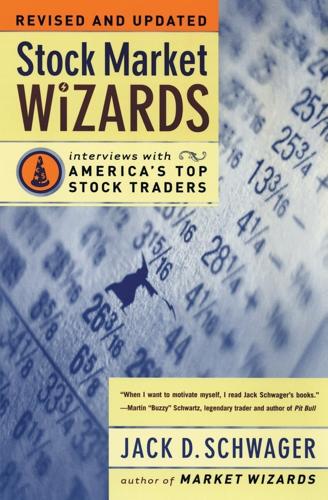
Stock Market Wizards: Interviews With America's Top Stock Traders
by
Jack D. Schwager
Published 1 Jan 2001
My favorite example is Ed Thorpe, who was a real pioneer in the field. He was doing this stuff well before almost anyone else. Ed has been remarkably open about some of the money-making strategies he's discovered over the years, both within and outside of the field of finance. After he figured out how to beat the casinos at blackjack, he published Beat the Dealer. Then when he figured out how to beat the market, he published Beat the Market, which explained with his usual professorial clarity exactly how to take advantage of certain demonstrable market inefficiencies that existed at the time. Of course, the publication of his book helped to eliminate those very inefficiencies.
…
INDEX accounting, 84, 89, 91, 94, 324 Blake, Gil, 189, 197-98 Bloomberg financial services, 57, 59 acquisition finance, 250-52, 253 Advanced Research Projects Agency (ARPA), 262 AIDS drugs, 1 74 Amazon.com, 150-52, 272-73, 323 America Online (AOL), 43-44, 235, 259 Amerigon, 62 arbitrage, 132-33, 255-56, 267, 284 ARPAnet, 262 Asian financial crisis, 18 assets: growth of, 23-24, 207, 312-13 liquidation of, ]65 return of, ], 31 transfer of, 189 value of, 41, 63, 248-49, 253 audits, 84,91 Balance Bars, 66 balance sheets, 42, 51, 85, 268 Bankers Trust, 57, 58 banking, 141, 243-44, 249 Bombay (clothing store), 67-68 bonds: convertible, 257 government, 8, 247-48 illiquid, 7, 8, 25 interest rates and, 9, 24, 67, 105, 133-34, 135, 269, 277 junk, 82 market for, 9-10, 1 10-1 1, 144-45, 285, 309 price of, 7-8, 110-11, 144-45, 285 book value, 44, 149, 150, 165, 167 Brandywine Fund, 58-59 brokerage firms, 55-56, 61-62 Buffett, Warren, 40, 42, 157 business plans, 68-69, 91, 94, 1 18, 122, 316, 324 Business Week, \27n Canada, 1-6, 9-10, 36 capital: bankruptcy, 12-14, 24, 105-6, 122, 139, 145-46, appreciation of, 23 loss of, 68 163 Bannister, Roger, 291 Bear Stearns, 127, 131, 135-36, 138, 142 Beat the Dealer (Thorpe), 266 Beat the Market (Thorpe), 266 Bender, John, 221-38 background of, 221-25 fund managed by, 221, 222 losses of, 225 as novice trader, 225-27 profits of, 221-22, 234 strategy of, 221, 226-38, 303, 304, 306, 312 Bezos, Jeff, 272-73 preservation of, 44, 141, 217 venture, 10, 205, 207, 222, 303 capitalization: large, 34, 43-44, 150, 198-99, 320 medium, 58 revenue vs., 36-37, 45, 52 small, 24, 47, 57, 58, 59, 68, 69, 78, 198-99, 281 for trading, 10, 114-19, 120, 142, 146, 147,205, 207, 222, 303 cash flow, 43, 44, 45, 51, 149, 248 catalysts, 44-46, 52, 60, 61, 62-63, 89, 94, 114, bid/ask differentials, 134-35 215-17,220, 279-81, 307, 325 Black & Decker, 62-63 central processing unit (CPU), 261 blackjack, 266-67 Black-Scholes model, 221, 227-34 certificates, stock, 69-70 chart patterns, 181-84 331 INDEX chief executive officers (CEOs), 49, 91, 241, 244-45, 250 Cook, Marvin, 95, 96, 123-24, 126 Cook, Terri, 97, 99, 106 funds managed by, 128-29, 138, 142-47 Ingram's, 272 as novice trader, 127-38 initial public offerings (IPOs), 24, 25, 250-52, chief financial officers (CFOs), 57, 58, 59, 60, 62, 64, Cramer's commentary, 218 67, 71, 72,94, 142, 324 Church, George J., 320 Cisco, 22 Cray, Seymour, 261-62 profits of, 128-29, 132, 141-42, 147 strategy of, 138-47, 252, 300, 301, 304, 305, 306 279-81 innovation, 147 currency trading, 5, 9, 202-3 Cyrus J.
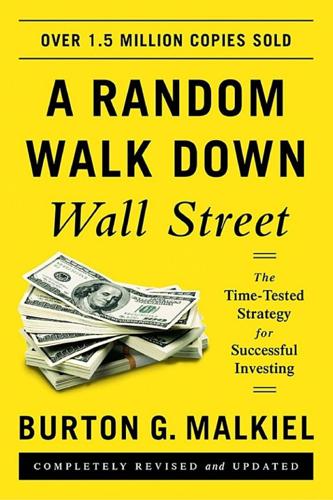
A Random Walk Down Wall Street: The Time-Tested Strategy for Successful Investing (Eleventh Edition)
by
Burton G. Malkiel
Published 5 Jan 2015
By following any technical strategy, you are likely to realize short-term capital gains and pay larger taxes (as well as paying them sooner) than you would under a buy-and-hold strategy. Thus, simply buying and holding a diversified portfolio suited to your objectives will enable you to save on investment expense, brokerage charges, and taxes. *Edward O. Thorp actually did find a method to win at blackjack. Thorp wrote it all up in Beat the Dealer. Since then, casinos switched to the use of several decks of cards to make it more difficult for card counters and, as a last resort, they banished the counters from the gaming tables. †If such a regularity was known to only one individual, he would simply practice the technique until he had collected a large share of the marbles.
…
.), 63 average return, see expected rate of return Avon Products, 68 Babson, Roger, 51–52 Babson Break, 51–52 banking, new system of, 98–100 Bank of America, 264, 272, 280 Bank of Japan, 77 bankrate.com, 299 bankruptcy, 40, 102 banks, 26 savings accounts in, 308 six-month certificates of, 308 see also Internet banks Barber, Brad, 172, 234, 246, 256 Barclays Aggregate Bond Market Index, 386 Barclays Capital broad bond index, 207 Barron’s, 88, 168, 393 Bartiromo, Maria, 92 Barton, Bruce, 48 Baruch, Bernard, 55, 258 base-rate probabilities, 238 Batten, Barton, Durstine and Osborn, 48 Bawl Street Journal, The, 341–42 Bayes’ law, 238 Beardstown Ladies, 153 Beardstown Ladies Common-Sense Investment Guide, The, 153 bear traps, defined, 114 Beating the Dow (O’Higgins), 150 Beat the Dealer (Thorp), 156n behavioral finance, 35, 229–59, 267 biased judgments in, 231, 235–38 herd mentality in, 231, 239–43, 248, 253–54 lessons for investors from, 252–59 limits to arbitrage in, 248–51 loss aversion in, 231, 243–45, 256 overconfidence in, 231, 232–35, 256 pride and regret in, 245–46 and savings, 246–48 Benartzi, Shlomo, 247–48 bequests, 374 Berkshire Hathaway, 399 Berns, Gregory, 241 Best, A.
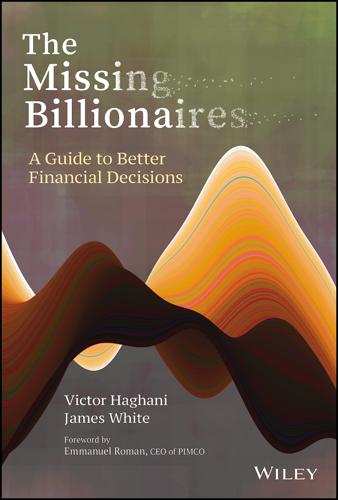
The Missing Billionaires: A Guide to Better Financial Decisions
by
Victor Haghani
and
James White
Published 27 Aug 2023
For instance, gamblers proficient at card‐counting in casino six‐deck blackjack games have about a 51% chance of winning each hand when the deck evolves in their favor. Correct bet‐sizing is critical to success and has been written about extensively by a number of professional gamblers. One of the most well‐known and prolific of these is Ed Thorp, a mathematics professor, professional gambler, and hedge fund manager who in 1962 penned Beat the Dealer: A Winning Strategy for the Game of Twenty‐one. A good rule of thumb for people with a normal amount of risk‐aversion is that if you are offered a gamble that is independent from existing risks you bear, and the downside represents less than 0.1% of your wealth, you should accept it if it has a positive expected value, because the edge you need to accept such a gamble is so small.
…
The precautionary principle (with application to the genetic modification of organisms) (Working Paper Series). NYU School of Engineering. The White House. (2023). Office of Management and Budget Circular A‐4. Thorp, E. (1961). The game of blackjack. American Mathematical Society. Thorp, E. (1966). Beat the dealer. New York: Random House Publishing. Thorp, E. (1969). Optimal gambling systems for favorable games. Review of the International Statistical Institute, 37(3), 273–293. Thorp, E. (1975). Portfolio choice and the Kelly criterion. Stochastic Optimization Models in Finance, 599–619. Tobin, J. (1958).
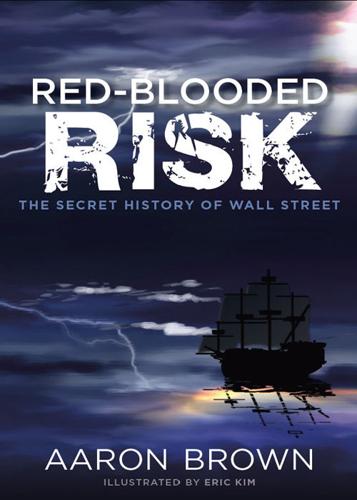
Red-Blooded Risk: The Secret History of Wall Street
by
Aaron Brown
and
Eric Kim
Published 10 Oct 2011
Other rocket scientists had been floor traders or other kinds of risk takers. What we had in common were quantitative training, a similar view of the world, similar aspirations, and at least several years of experience supporting ourselves with independent risk-taking activities. We also had in common a few books, first among which were Edward Thorp’s Beat the Dealer (Random House, 1962) and Beat the Market (Random House, 1967), the latter written with Sheen Kassouf. Ed was the mathematics professor who analyzed and popularized blackjack card counting, and also beat the house at other casino games. In the mid-1960s he turned to investing and invented or perfected an extraordinary number of what are now the standard hedge fund strategies.
…
Index Accuracy ratio Adams, Brandon Aggregation process Ainsley, Craig Algorithmic Trading and DMA ( Johnson) Algren, Nelson All the Devils Are Here (McLean and Nocera) Allen, Franklin Anderson, Chris Anomalies Anthropology of Economy, The (Gudeman) Arbitrage Ariely, Dan Ars Conjectandi (Bernoulli) Augar, Philip Autocorrelation Bacharach, Michael Back office Backward-looking risk management Bad-boy publicity Bad Bet (O’Brien) Bankers Trust Bank for International Settlements Bank One Barter, Exchange and Value (Humphrey and Hugh-Jones) Basel capital rules Bayes, Thomas Bayesians/Bayesian concepts. See also Probability betting/probability and foundation of frequentism and in history/law “prior beliefs” and risk defining capital technology startups and Beat the Dealer (Thorp) Beat the Market (Thorp and Kassouf) Behavioral Game Theory (Camerer) Bennet, Rick Bernoulli, Jakob Berns, Gregory Bernstein, Peter Betting: Kelly bets probability and public sports Beyond Counting (Grosjean) Beyond Individual Choice (Bacharach) Big Short, The (Lewis) Black, Alethea Black, Fischer Black-Scholes-Merton model Black Swan, The (Taleb) Black Wednesday Bloom, Murray Teigh Bogle, John Bond ratings Bookstaber, Richard Born Losers (Sandage) Bounds of Reason, The (Gintis) Brenner, Reuven and Gabrielle Bringing Down the House (Mezrich) British Treasury Broke, (Adams) Bronze Age Bronze Age Economics (Earle) Bubble investors Bulls, Bears, and Brains (Leitzes) Burton, Robert Alan Business Cycles and Equilibrium (Black) Busting Vegas (Mezrich) Calvet, Laurent E.
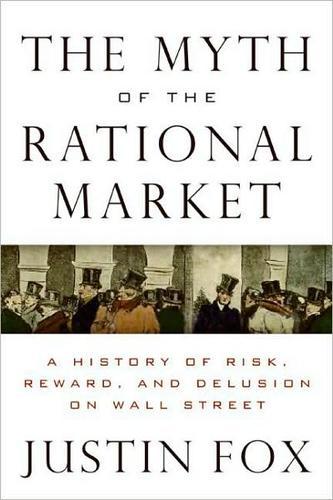
The Myth of the Rational Market: A History of Risk, Reward, and Delusion on Wall Street
by
Justin Fox
Published 29 May 2009
He accepted the offer of a pair of New York area businessmen—one of them Emmanuel Kimmel, whose New Jersey parking-garage business would later grow into entertainment giant Time Warner.3 Kimmel flew Thorp to New York several Wednesdays in a row to practice the scheme, sending him back up to Boston each time, Thorp recalled, with a reward of $100 in cash and a salami. During MIT’s spring break, Thorp and his new partners traveled to Reno to try out his method. It worked, and Thorp wrote a book about it called Beat the Dealer, which became a bestseller and made the professor a minor celebrity. The book, still in print, continues to inspire new generations of card sharps (the MIT students in the book Bringing Down the House and movie 21 were Thorp acolytes).4 But there were limits to how much Thorp could make at the gaming tables, especially with the casino bosses doing all they could to thwart him.
…
., 121 Asian currency crisis, 241 Asness, Cliff, 259–60, 260–61, 262 asset-backed securities, xii AT&T, 42, 220 Austrian School, 49, 301 Babson, Roger, 16–17, 19, 23–26, 31, 35, 204, 209, 263, 322 Bachelier, Louis, 6–8, 13–14, 27, 55–56, 65–66, 68, 71, 144, 148–49, 322 Bacon, Francis, 30 Baker, James, 230 Baker, Malcolm, 300 Ball, Ray, 205 Bänz, Rolf, 205–6, 225 Barclays Global Investors, 143 Barra, 139, 142, 224 Barron’s, 116, 265 Bass, Thomas, 304 The Battle for Investment Survival (Loeb), 57 bear markets, 5, 18, 338n. 16 Beard, Charles, 156 Beat the Dealer (Thorp), 217 Beat the Market (Thorp and Kassouf), 218, 219 Beaver, Bill, 135–36 behavioral finance and Black, 201 current state of, 298, 299–300 and economic decision making, 292–95, 295–97 and Friedman, 188 and media coverage, 200–201, 291–92, 358–59n. 23 and Skinner, 355n. 2 and Thaler, 186–87, 201, 288–89, 292–95, 296–97, 298 “Belief in the Law of Small Numbers” (Kahneman and Tversky), 177 Bell Labs, 42 Bellow, Saul, 89 Benartzi, Shlomo, 294 Benhamou, Eric, 262 Berkshire Hathaway, 216, 221–23, 260 Berle, Adolf, Jr., 154, 160, 165–66, 274, 352n. 3 Bernanke, Ben, xiii, 183 Bernoulli, Daniel, 51 beta, 87, 122–23, 126–27, 139, 152, 205, 207–8, 248–49, 345–46n. 30 Black, Fischer and asset pricing, 141, 149, 248, 322, 346–47n. 30 death, 235 and efficiency, 224 and Goldman Sachs, 224 and “joint hypothesis,” 105 and market crashes, 231 and market volatility, 138 and options, 144–47, 149, 277–78 and Ross, 150 and Shefrin and Statman, 358n. 25 and Summers, 199–201 and Thorp, 219 and Wells Fargo, 127 Black-Scholes formula, 147, 218–19, 233–34,237, 278–79, 280, 320 Bogle, John C., 112–13, 115, 122, 128–30, 306, 322 Bok, Derek, 169 bonds and bond markets, xi–xii, 13–14, 16, 21–22, 29, 38–39, 140–41, 167–68 book-to-price ratio, 208–9 Booth, David, 225 Bork, Robert, 158 Born, Brooksley, 244 Bossaerts, Peter, 297 Brealey, Richard, 355n. 38 Brennan, Michael, 284 Bretton Woods system, 92 Brinegar, Claude, 43–44 Brooks, John, 68, 118 Brown, Kathleen, 278 Brownian motion, 7, 13, 41, 65–69, 73 Bryan, William Jennings, 11 “Bubble Logic: Or, How I Learn to Stop Worrying and Love the Bull” (Asness), 261 Buchanan, James M., 159 Buffet, Warren, 118, 211–14, 214–16, 221–23, 229, 260, 271, 278–79, 323, 366n. 29 bull markets, 18, 61–62, 255, 279, 291 Burns, Arthur, 76, 217, 258 Bush, George W., 295 business cycle, 19–20, 28, 81, 309–10 Business Cycle Institute, 41 Business Week, 97–98 California Institute of Technology, 147 California Public Employees Retirement System (Calpers), 272, 273–74 Cambridge, University, 64 Camerer, Colin, 188 Cameron, David, 295 Campaign GM, 159 Campbell, John, 257 capital asset pricing model (CAPM).

Traders, Guns & Money: Knowns and Unknowns in the Dazzling World of Derivatives
by
Satyajit Das
Published 15 Nov 2006
There are flattering profiles in financial magazines about their operations. All that the accolades say is that the companies have provided a lot of business and profits for the banks. ‘Zaiteku’ or the bride stripped bare Having mastered the business of hedging, corporations rapidly moved on to trying to beat the dealers at their own game: trading. In 1991, Allied Lyons (now known as Allied Domecq), a British food and drinks company, lost Having mastered the £150 million in currency option trading. business of hedging, Instead of hedging the company’s risk, its corporations rapidly moved treasury tried to make profits trading in currency options.
…
So, who was fooling whom? Strippers You can strip down cars. It’s the same with convertibles. Convertible stripping dates back to the 1960s. A famous 1967 book by Edward Thorp and Sheen Kassouf, Beat the Market, set out the principles of convertible arbitrage. Thorp was already well known for another book, Beat the Dealer, which set out the process of card counting in blackjack. Thorp and Kassouf outlined the idea of breaking up a convertible bond into its bond and equity parts and hedging and trading them separately. Astute traders began buying convertible bonds and stripping them. They sold the equity option to someone who wanted the equity and the bond without the option to an investor who just wanted the debt.
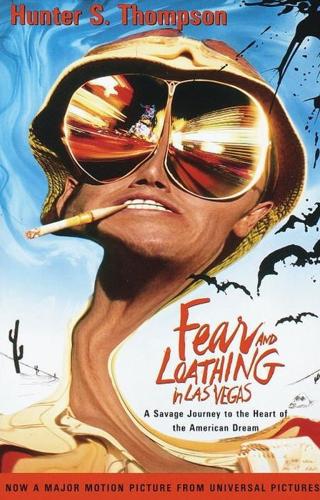
Fear and Loathing in Las Vegas
by
Hunter S. Thompson
and
Ralph Steadman
Published 31 Dec 1970
And, sweet Jesus, there are a hell of a lot of them—still screaming around these desert-city crap tables at four-thirty on a Sunday morning. Still humping the American Dream, that vision of the Big Winner somehow emerging from the last-minute pre-dawn chaos of a stale Vegas casino. Big strike in Silver City. Beat the dealer and go home rich. Why not? I stopped at the Money Wheel and dropped a dollar on Thomas Jefferson—a $2 bill, the straight Freak ticket, thinking as always that some idle instinct bet might carry the whole thing off. But no. Just another two bucks down the tube. You bastards! No. Calm down. Learn to enjoy losing.
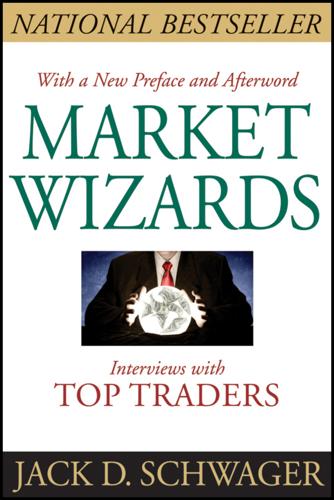
Market Wizards: Interviews With Top Traders
by
Jack D. Schwager
Published 7 Feb 2012
I found that the origin of the term could be traced to the color of the most expensive chip in Monte Carlo. I said to myself, “Aha, now I know what this game is all about—gambling.” I threw away my copy of Graham and Dodd [Principles of Security Analysis, considered by many to be the “bible” of stock market analysis] and bought a book called Beat the Dealer. I came away with the idea that successful investment was really a matter of odds, and if you could compute the odds, you could find and test methods that could beat the market. What made you believe that you could develop methods to put the odds in your favor? I don’t know that I understood it all then, but over the years I came to realize that the markets are inefficient.
…
I made a blackjack strategy card, and when I got to the tables, I sat down with 10 silver dollars and began to play. People at the table were getting clobbered because the dealer had a really good run of luck. My little strategy card, which the other players had laughed at when I first sat down, was doing pretty well. I was holding my own. After your book Beat the Dealer, which revealed your blackjack system to the public, was published and became a best seller, were the casinos beginning to lose money as a result? What happened was this: There were a number of really good players, maybe a thousand or so, who extracted money from the casinos. Then there was a much larger number of players who used the basic strategy so they could play much longer without losing as much.

Troublemakers: Silicon Valley's Coming of Age
by
Leslie Berlin
Published 7 Nov 2017
Taylor called the featured presenter the “dealer” because the speaker set the terms much as a dealer sets out the rules of a poker game. Soon enough, the meetings themselves came to be called Dealers. “Dealer” also had a more antagonistic connotation. Taylor had read the popular 1962 how-to guide on card counting, Edward O. Thorp’s Beat the Dealer. He hoped that meeting participants would use their expertise to poke holes in a presenter’s work in the same way that card counters used continuous computations to get the edge on a blackjack dealer. Nearly every presentation was interrupted by mutters or even shouts of disagreement from people sprawled in the soft chairs on the floor.
…
., 28–29, 191 Arpanet: construction of, 18–21, 94 controversy over, 158 Engelbart demo and, 27 first transmission of, xii, 6, 9 funding for, 16–17, 23 initiation of, 17–18 interactive computing and, 24 as Internet precursor, xii, xv, 6, 24, 30, 92, 103, 376 Taylor and, xv, 7, 9, 12, 15–23, 104n Xerox and, 103, 107 ASK Computer Systems: ASKNET and, 321, 361, 364 Boeing and, 177–79 Browne and, 86–87, 177–78, 182, 324–27 business plan of, 82–83, 178–79, 186 culture of, 182–85, 326 customers of, 79–80, 85–87, 177–81, 314, 360–61 employees of, 80, 86–87, 176–78, 182–83, 315, 323–25, 360–61 headquarters of, 78, 181–82, 322–26 Hewlett-Packard and, 176–86, 313–14 Hughes Aircraft and, 179–81 IPO of, 84, 318–20, 324–25, 360 launch of, 76, 146 MANMAN manufacturing software and, 84–87, 102, 176–81, 184–86, 259n, 314, 321–22, 360, 364, 371 marketing of, 75, 79, 180–82 media and, 322, 360 Powertec Systems and, 177 sales and profits of, 82, 85–88, 179–81, 186, 314, 321–22, 360 as software provider, 76, 80, 83, 91, 157, 222 Tymshare partnership and, 83–84, 149, 179 see also Kurtzig, Sandra ASKNET, 321, 361, 364 Association of University Technology Managers, 145 Asteroids game, 274, 278 AT&T, 103, 160–61, 353–54 Atari, xii Alcorn and, xvi, 168–75, 269–82 arcade games and, 274–75, 344 Bally licensing and, 113–16 Bushnell and, 107–31, 173–75, 269–73, 364 competitors of, 121–23, 250, 269–71, 274, 278, 285, 345–46 culture of, 121–22, 170–71, 174, 249, 280–81 customers of, 113–14, 118–19 Cyan Engineering and, 169–70 Dabney and, 107–22 employees of, 118–19, 123–24, 169–73, 269–82 game design and, 274–77 Gran Trak game and, 124, 130 growth and success of, 122, 130 Home Pong game, 130, 157, 281 investors and, 119, 168–69, 187; see also Warner Communications Jobs and Wozniak at, 208, 230, 233 launch of, 38–40, 58, 110 marketing and, 129–30, 269 new product development and, 272–73 Pong game and, xvi, 112–23 profits and stock of, 172–75, 274, 344–46 salaries at, 173, 277–78 Sears and, 129–30 Valentine and, 126–29, 154, 168–69, 173 VCS game system and, 270–78, 345 Atkinson, Bill, 357 Atomic Energy Commission, 203 Bally, 109, 113–16, 125n, 346 Baran, Paul, 21 Barnes, Andy, 266–67 BASIC programing language, 66, 149, 207–9 Bayh-Dole Act, 264–65 Beat the Dealer (Thorp), 99 Bechtolsheim, Andy, 364–65 Bell and Howell, 292–93 Bell Labs: Kurtzig and, 64–69 mainframe computers and, 67–68, 83 Spencer and, 336 time-sharing service and, 65–69, 83 UNIX operating system and, 353n Berg, Paul, 136n, 142–44, 263 Berkeley Computer Corporation (BCC), 96, 102n Beverly Hills, Calif., 66, 77 Beyers, Bob, 264n biotechnology industry, xiii, xiv, xvi, 138–40, 187, 194, 256–58, 262, 349, 366, 375 see also Genentech birth control pill, 203, 235 Blue, Al, 18–21, 30 Boeing, 177–80 Bolt Beranek and Newman, 7, 22–23, 28, 94–96 Bottarini, Roger, 177–78 Bowers, Ann, 150, 297, 300 Boyer, Herb: Cohen-Boyer patent application and, 202–4, 260–67 recombinant DNA process and, 135–43 and Reimers, 194, 200–201, 208, 256–57, 260–67 and Swanson, 194–204 Brand, Stewart, 90, 226 Braniff, Ron, 319, 370 Breakout game, 208 Brin, Sergey, xii, 351 Bristow, Steve, 118–20, 125, 130, 172–73, 272, 281 Brooklyn Polytechnic Institute, 191–92 Brown, Jerry, 255, 360 Browne, Marty, 86–87, 177–78, 182, 323–27 see also ASK Computer Systems Burrows, Mike, 343 Bushnell, Nolan: and Alcorn, 39–40, 107, 169, 173–75, 269–73, 276 Ampex and, 38–40, 107–10 Atari and, 107–31, 169–75, 269–73, 364 business cultures, 4, 22, 50, 67, 121–22, 177–78, 182–85, 280–81, 326, 354–55 business startups, see start-up companies BusinessWeek, 185, 257, 317, 321, 322 Byers, Brook, 192n, 195, 258, 262 Byte Shop, 207, 228–29, 234, 247 calculators, 48, 86, 160, 183, 213, 216, 225 California, University of: at Berkeley, 11, 15, 32–36, 56–57, 96, 177, 226, 342 at Los Angeles (UCLA), 6–7, 21, 30, 65, 68, 333 at San Francisco (UCSF), 133–40, 144, 195, 374 at Santa Barbara, 21 California Commission on Industrial Innovation, 255 Call of Duty game, 278, 366 Caltech, 50–51, 62 Cambridge, Mass., 7, 28, 188, 263 Carnegie Mellon University, 11, 99, 289, 342 Carsten, Jack, 151–52 Carter, Gene, 50, 51–52, 213, 234, 241–43, 246, 294–95, 365 Carter, Jimmy, 286 Carterfone regulatory decision, 160 cassette drives, 244 cassette players, 209, 230, 239, 284 CB radios, 231, 259 CBX system, 160–61, 308, 312, 352 Cetus, 192–94, 199, 202, 257–58, 266 Chang, Annie, 136–37 Chicago, Ill., 3–4, 74–75, 113–15, 120, 129, 266, 322 Christensen, Clayton, 213 Chuck E.
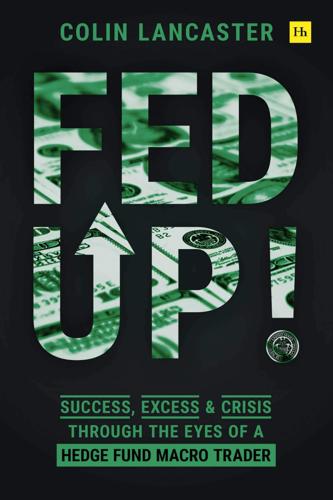
Fed Up!: Success, Excess and Crisis Through the Eyes of a Hedge Fund Macro Trader
by
Colin Lancaster
Published 3 May 2021
Selecting team members, managing them, getting the right mix of skill sets and technical abilities. All of this means less time trading and more time managing. Many of the early hedge fund guys found their inspiration to go into this business in a guy named Ed Thorp. He wrote a couple of famous books. My first boss gave me one of them early in my career, and it got me hooked. Ed wrote Beat the Dealer, which was the first book to prove mathematically that blackjack could be beaten by card counting, and Beat the Market, which outlined many of the early arbitrage strategies. The guy was (and still is) an incredible innovator, everything from option arbitrage, warrant modeling, convertible arbitrage, index arbitrage, and statistical arbitrage.
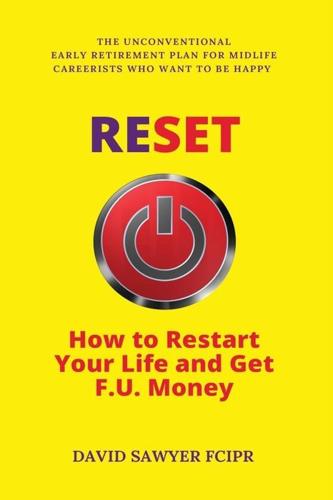
Reset: How to Restart Your Life and Get F.U. Money: The Unconventional Early Retirement Plan for Midlife Careerists Who Want to Be Happy
by
David Sawyer
Published 17 Aug 2018
Empirical studies find that if you want to make money out of the stock market, do not listen to stock market analysts[341]. As Jim Collins writes in The Simple Path to Wealth: “what the media wants from these commentators is drama. Nobody is going to sit glued to their TV while some rational person talks about long-term investing[342].” Investor and author of Beat the Dealer, Ed Thorp, agrees: “Most stock-picking stories, advice and recommendations are completely worthless[343].” 3. Don’t try to time the market To be successful, you need to call the market high and the market low over and over again. Without a time machine, it’s impossible. You might try, but you’ll end up either missing out on gains or losing your shirt.
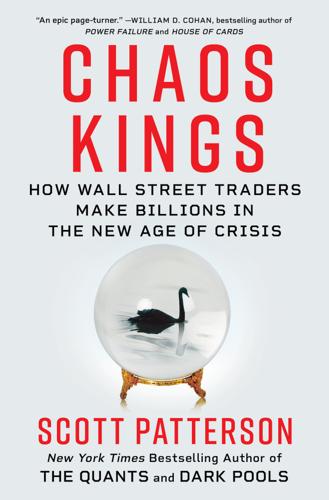
Chaos Kings: How Wall Street Traders Make Billions in the New Age of Crisis
by
Scott Patterson
Published 5 Jun 2023
That’s a ruin problem—specifically, gambler’s ruin. Rather than an average of the sum of a series of disconnected bets from a group, ruin problems apply to an individual’s trajectory across time. It’s what blows up banks and hedge funds that don’t manage their risk properly. They might get a lucky streak and beat the dealer ten times in a row, but on the eleventh bet they can lose it all. Taleb and his coauthors describe this as the difference between “localized non-spreading impacts” and “propagating impacts resulting in irreversible and widespread damage.” It’s the risk Universa never takes. By suffering only small hits—cutting losses by loving to lose à la Everett Klipp—Spitznagel can’t blow up like a devil-may-care hedge fund or investment bank packed to the gills with leverage (average investors who simply put their money into stock-and-bond mutual funds aren’t playing a ruin game, because the market never loses 100 percent, but they can suffer large drawdowns in market crashes that can hurt their long-term wealth).
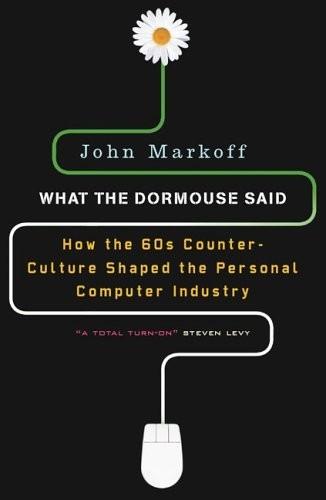
What the Dormouse Said: How the Sixties Counterculture Shaped the Personal Computer Industry
by
John Markoff
Published 1 Jan 2005
Years later, however, when people would ask about the inventive ideas in Smalltalk, Ingalls would joke, “Well, where do you think these ideas came from?!” Ingalls demonstrated the new feature to one of the large weekly meetings of the PARC researchers in the fall of 1974. The gatherings were known as “Dealers” and had been instituted by Taylor, who took the name from the book Beat the Dealer by Edward O. Thorp, the MIT professor who had developed a system for winning at blackjack. Taylor was taken by the image of a nerdy math professor beating the house. The meetings became forums for both technical presentations and a kind of group interview system for job candidates. The demonstration of BitBlt had a dramatic impact both inside and outside of Kay’s group.
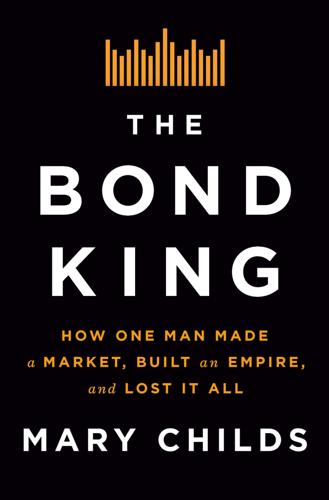
The Bond King: How One Man Made a Market, Built an Empire, and Lost It All
by
Mary Childs
Published 15 Mar 2022
But for much of his senior year, he was stuck in a hospital bed with a collapsed lung and in need of multiple skin grafts. In his boredom, he picked up a book he’d bought after spring break the year before, when he’d lost fifty dollars at blackjack that he didn’t have to lose. He was skeptical that Ed Thorp’s Beat the Dealer: A Winning Strategy for the Game of Twenty-One could work, but he was stuck. He read the whole thing. When he finished reading it, he got a deck of cards and started testing Thorp’s strategy in his hospital bed. “I had to prove it, because I didn’t believe it,” Gross recalls. “I had nothing to do, so I proved it.”
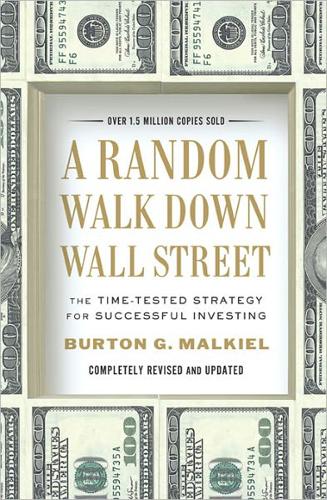
A Random Walk Down Wall Street: The Time-Tested Strategy for Successful Investing
by
Burton G. Malkiel
Published 10 Jan 2011
But with higher expected inflation, investors may reasonably project that corporate earnings and dividends will also increase at a faster rate, causing stock prices to rise. A fuller discussion of inflation, interest rates, and stock prices is contained in chapter 13. * Edward O. Thorp actually did find a method to win at blackjack. Thorp wrote it all up in Beat the Dealer. Since then, casinos switched to the use of several decks of cards to make it more difficult for card counters and, as a last resort, they banished the counters from the gaming tables. * If such a regularity was known to only one individual, he would simply practice the technique until he had collected a large share of the marbles.
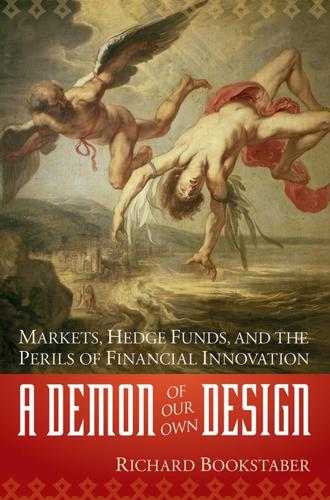
A Demon of Our Own Design: Markets, Hedge Funds, and the Perils of Financial Innovation
by
Richard Bookstaber
Published 5 Apr 2007
Bamberger headed off to Princeton Newport, where he continued to pursue the strategy with the legendary Ed Thorp for a year, made a small fortune, and then disappeared from the world of trading. This move was a natural. Thorp was the first great analytically oriented trader. An MIT mathematician, he was the author of Beat the Dealer (Random House, 1966), which introduced the concept of card counting to blackjack. He wrote the book to spread his techniques after he had been banned by most casinos and could no longer pursue the strategy for profit. The next year he wrote Beat the Market (Random House, 1967), which formed the basis of convertible bond arbitrage, a strategy that remains the mainstay of many hedge funds.
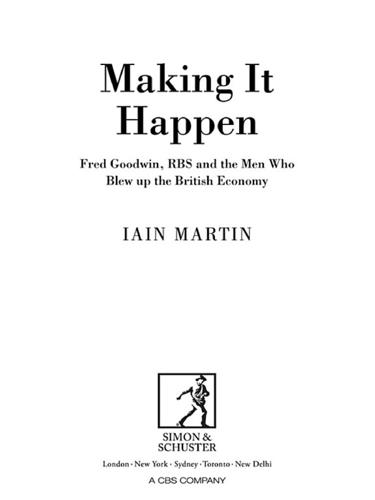
Making It Happen: Fred Goodwin, RBS and the Men Who Blew Up the British Economy
by
Iain Martin
Published 11 Sep 2013
It was noticed after he had gone that someone had ordered that the RBS and NatWest logos in the portrait be painted over. 8 ‘Royal Bank of Scotland saviour takes his final curtain call’, Independent, 29 April 2006. 9 The current Cameron of Lochiel is Donald, Johnny Cameron’s elder brother. 10 ‘Heimlich Institute honors RBS for lifesaving ad’, Heimlich Institute, 21 September 2004. 11 Sutherland visited the Kremlin as part of a delegation in 2003, although BP’s investment in Russia via TNK-BP later descended into an extremely bitter row with the Russian government. Chapter 10 1 ‘Greenwich’s outrageous fortune’, Vanity Fair, July 2006. 2 Edward O. Thorp was one such pioneer in America, a Maths professor who perfected a gambling system and wrote the best-selling books Beat the Dealer and then Beat the Stock Market. In the early 1970s he applied his talents to creating a hedge fund, Princeton Newport Partners. 3 When Genius Failed: The Rise and Fall of Long-term Capital Management, Roger Lowenstein, 2000. 4 ‘$363m is average pay for top hedge fund managers’, USA Today, 26 May 2005. 5 Kruger founded Five Mile Capital. 6 Angelo Mozilo built Countrywide, plunged deep into sub-prime and after the crisis was targeted by the US authorities.
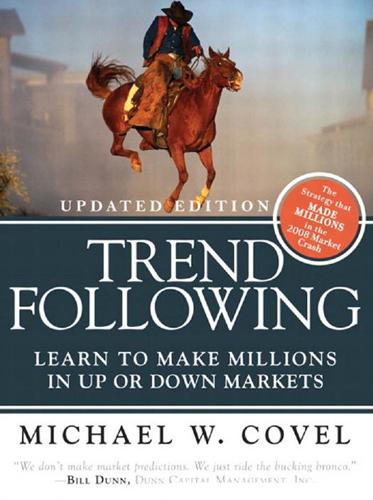
Trend Following: How Great Traders Make Millions in Up or Down Markets
by
Michael W. Covel
Published 19 Mar 2007
Mental Accounting Matters. Journal of Behavioral Decision Making, 12 (1999): 183–206. Thaler, Richard H. Saving, Fungibility, and Mental Accounts. Journal of Economic Perspectives, Vol. 4, No. 1 (Winter 1990): 193–205. Tharp, Van K. Trade Your Way to Financial Freedom. New York: McGraw-Hill, 1999. Thorp, Edward O. Beat the Dealer. New York: Vintage Books, 1966. Toffler, Alvin. Future Shock. New York: Bantam Books, 1971. Tully, Shawn. Princeton’s Rich Commodity Scholars. Fortune, 9 (February 1981): 94. Tversky, Amos and Daniel Kahneman. Belief in the Law of Small Numbers. Psychological Bulletin, 76 (1971): 105–110. Tzu, Sun.

New Market Wizards: Conversations With America's Top Traders
by
Jack D. Schwager
Published 28 Jan 1994
No, I got a job selling time on large computers. However, that position was essentially a marketing slot, and I was interested in doing analytical work. After about a year, I left to take a job in operations research for Kaiser Cement. At that time, I got interested in playing blackjack by reading a book called Beat the Dealer by Ed Thorp. From 1971 to 1975, I went to the Nevada casinos regularly. Did you live in Nevada at the time? No, I lived in California. But I would take a blackjack trip every chance I got. I probably spent about five days a month in Nevada during that time. In a sense, I owe everything that I have to the state of Nevada.
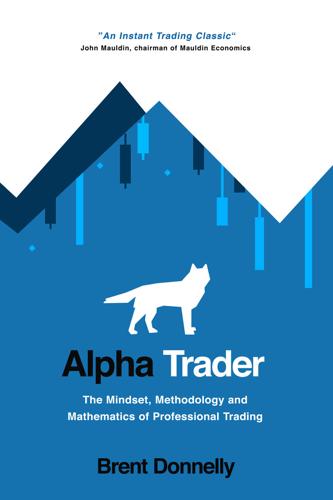
Alpha Trader
by
Brent Donnelly
Published 11 May 2021
The biggest size you think is still rational, whether or not that makes your knees weak. If it makes your knees wobble a bit but the math is rational, that’s perfect. Varying bet size when huge opportunities come along is an important determinant of trading success. Changing bet size is the way card counters beat the dealer in blackjack. They look for opportunities with abnormally good odds and then make large bets on those events. Obviously the big difference with trading is that you don’t know the odds of any trade, you can only estimate them. But if you see a trade that you believe has a 90% chance of success and a payout of 2 : 1… You need the courage to bet big.
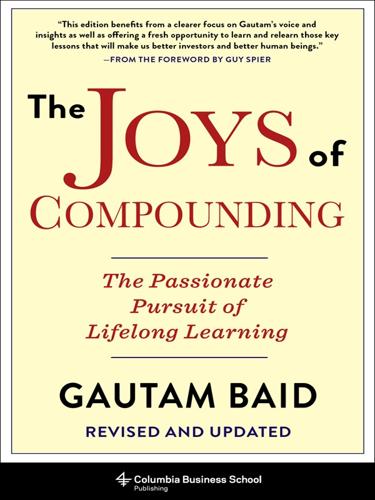
The Joys of Compounding: The Passionate Pursuit of Lifelong Learning, Revised and Updated
by
Gautam Baid
Published 1 Jun 2020
Ivanhoff Capital (blog), February 2, 2012. http://ivanhoff.com/2012/02/02/there-are-3-stages-in-a-typical-bull-market. Thorndike, William. The Outsiders: Eight Unconventional CEOs and Their Radically Rational Blueprint for Success. Boston, MA: Harvard University Press, 2012. Thorp, Edward O. A Man for All Markets: From Las Vegas to Wall Street, How I Beat the Dealer and the Market. New York: Random House, 2018. Tilson, Whitney. “Notes from the 2002 Wesco Annual Meeting.” Whitney Tilson’s Value Investing Website. https://www.tilsonfunds.com/motley_berkshire_brkmtg02notes.php. ——. “Notes from the 2003 Wesco Annual Meeting.” Whitney Tilson’s Value Investing Website. http://www.tilsonfunds.com/motley_berkshire_wscmtg03notes.php. ——.

The Innovators: How a Group of Inventors, Hackers, Geniuses and Geeks Created the Digital Revolution
by
Walter Isaacson
Published 6 Oct 2014
“As a result, he was in a unique position to attract a staff of the highest quality.”57 Taylor had another leadership skill that he had refined at his meetings with ARPA researchers and graduate students: he was able to provoke “creative abrasion,” in which a team of people can question each other, even try to eviscerate each other’s ideas, but then are expected to articulate the other side of the dispute. Taylor did that at what he called “Dealer” meetings (evoking people trying to beat the dealer at blackjack), in which one person had to present an idea while others engaged in constructive (usually) criticism. Taylor was not a technology wizard himself, but he knew how to get a group of them to sharpen their sabers in friendly duels.58 His flair for playing a master of ceremonies allowed him to prod, cajole, stroke, and jolly up temperamental geniuses and get them to collaborate.